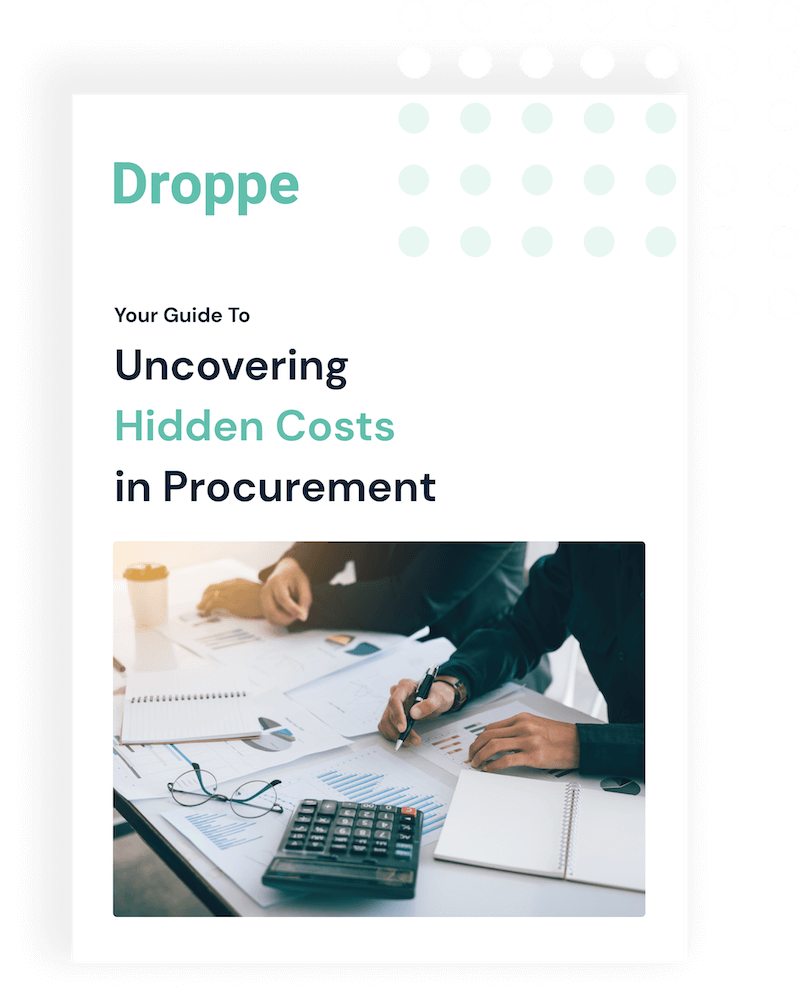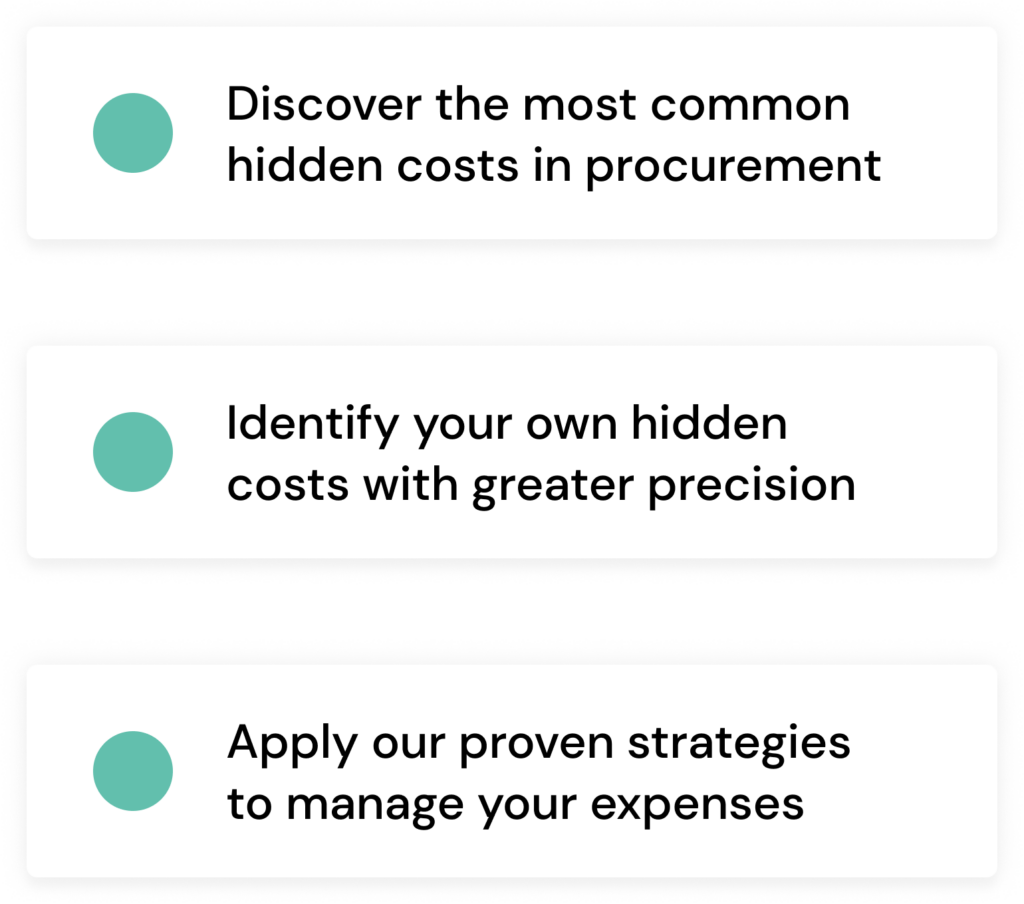Automated Spend Analysis: Key Benefits
Introduction: Controlling expenses and optimising procurement procedures are essential for growth and profitability in a complicated corporate environment. Organisations seeking...

Get 20€ off on your first order!
Have you ever been caught off-guard by unexpected expenses in your procurement department?
Imagine this situation: You’ve painstakingly built a comprehensive spending policy for your organization, detailing preferred vendors and budget limits. Yet, at the end of the month, you’re faced with receipts from non-approved vendors, and expenses that don’t align with your established procurement guidelines.
If so, the likely culprit could be maverick spend.
Maverick spend is the act of buying goods or services that don’t align with a company’s predefined spending rules. More than just an unplanned purchase of office items, maverick spend usually hints at scenarios where workers don’t prioritize the company’s financial best practices. This can involve bypassing established procurement channels for new tools or services, or incurring costs without adequate reasons. Such deviations in purchasing habits can lead you to operational inefficiencies, increased expenses, and even potential hazards when dealing with unauthorized vendors.
In this article, we have compiled a list of 7 proven techniques to control procurement expenses, ensuring that maverick buying doesn’t derail your budget or compromise the integrity of your procurement processes.
Whether you’re struggling with occasional maverick spending or trying to understand what are its causes, here are the topics we will cover:


Have you considered the hidden costs and risks tied to unplanned purchases in your organization?
Firstly, without a tight rein on maverick spend, you might be missing out on substantial savings as purchases made outside the confines of well-negotiated contracts often lead to overpaying for goods or services. Moreover, the quality control of these purchases can often be subpar. Think of it as opting for an unknown brand over a trusted one; you’re more likely to receive goods that are of inferior quality with a maverick purchase.
Additionally, such spending behaviours can strain relationships with established vendors. Breaching agreed-upon contracts or terms can lead to a loss of trust. Plus, there’s the added peril of stepping into regulatory grey areas. Working with unknown suppliers, especially without thorough vetting, poses risks of regulatory non-compliance, which can have legal and financial implications for your company.
Then there’s the added administrative burden. Consider the accounting teams sifting through myriad transactions, trying to make sense of maverick spending. Instead of a streamlined process with familiar vendors, they’re left reconciling discrepancies due to rogue purchases. This not only wastes valuable time but also hinders the efficiency of your procurement team.
Lastly, maverick buying can disrupt your budgeting. After all, if expenditures are erratic and untracked, how can you accurately gauge if you’re overspending or staying within budgetary confines? Such unpredictability complicates budget planning and makes financial foresight challenging.
All in all, while the occasional unplanned purchase might seem harmless, the cumulative effect of maverick spend can negatively impact your bottom line, affecting everything from vendor relationships to profits.
Are you familiar with the various ways uncontrolled spending can present itself and what are the subtle ways it can infiltrate your procurement process?
Here are the three main types of maverick spend:
Now that we’ve delved into the types of maverick spend you can encounter, we can focus on the 6 main root causes:
As a last note remember, recognizing the types and underlying causes of maverick buying is the first step in crafting effective strategies to curb such spending.
So far, we’ve covered the main types of maverick spend you’re likely to encounter and their root causes. However, how can you successfully implement the right processes to curb these expenses before they even manifest?
Here are 7 best practice you can follow:
All in all, controlling maverick spend is about implementing strong targeted processes along with a culture of financial responsibility, ensuring each purchase aligns with your company’s objectives.

At the heart of every flourishing business is not just the revenue it generates, but also the expenses it controls. In this article, we walked you through the intricacies of maverick spend – from its types and causes to best practices to control it.
As you move forward, keep these insights in your toolkit, ensuring that every purchase aligns with your company’s goals and vision. Ultimately, it’s the well-informed choices that pave the way for sustained growth.
Thank you! You've signed up for our newsletter.


















Introduction: Controlling expenses and optimising procurement procedures are essential for growth and profitability in a complicated corporate environment. Organisations seeking...

Introduction No matter its size, organisation success depends on expense control. From freelancers to huge enterprises, software licences, marketing, and...

Introduction: Agile innovation has revolutionised IT and become the gold standard in software development. Its impact goes beyond IT, affecting...
Introduction: Controlling expenses and optimising procurement procedures are essential for growth and profitability in a complicated corporate environment. Organisations seeking...

Introduction No matter its size, organisation success depends on expense control. From freelancers to huge enterprises, software licences, marketing, and...

Introduction: Agile innovation has revolutionised IT and become the gold standard in software development. Its impact goes beyond IT, affecting...
Get 20€ off on your first order!
Save 30% by buying directly from brands, and get an extra 10€ off orders over €100
Save 30% by buying directly form brands, and get an extra 10€ off orders over €100